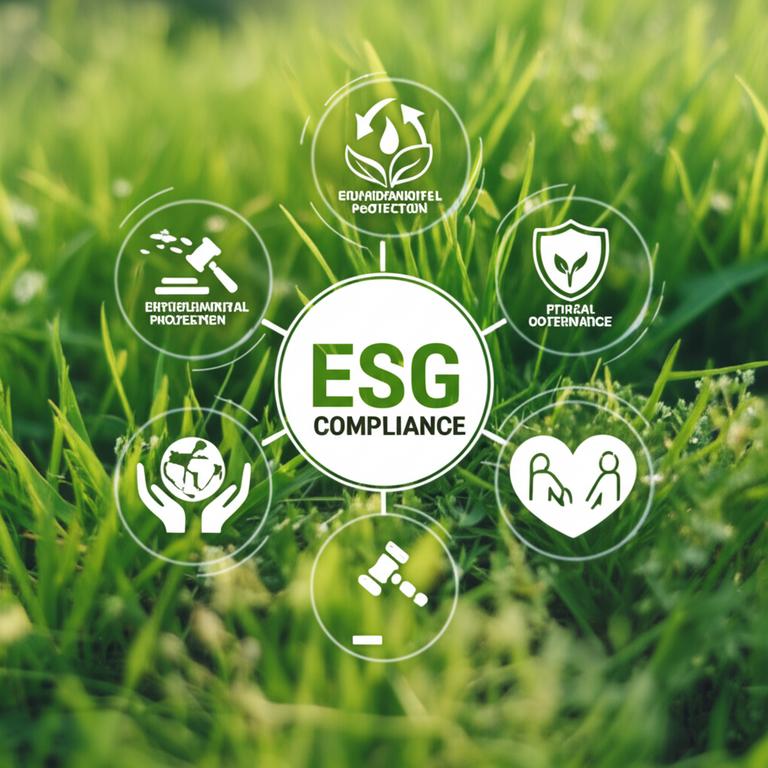ESG Compliance Management: A Comprehensive Guide

Understanding ESG Compliance Management
Nội dung
ESG stands for Environmental, Social, and Governance. ESG compliance management involves establishing and maintaining processes to ensure an organization adheres to relevant ESG regulations, standards, and frameworks. It encompasses a range of activities, from data collection and reporting to risk management and stakeholder engagement.
What is ESG?
ESG factors are a set of standards for a company’s operations that socially conscious investors use to screen potential investments. Environmental criteria consider how a company performs as a steward of nature. Social criteria examine how it manages relationships with employees, suppliers, customers, and the communities where it operates. Governance deals with a company’s leadership, executive pay, audits, internal controls, and shareholder rights.
Why is ESG Compliance Important?
- Enhanced Reputation: Demonstrating a commitment to ESG principles enhances a company’s reputation and builds trust with stakeholders.
- Investor Attraction: Investors are increasingly prioritizing ESG factors when making investment decisions.
- Risk Mitigation: Effective ESG compliance helps identify and mitigate potential risks related to environmental, social, and governance issues.
- Improved Operational Efficiency: ESG initiatives often lead to more efficient resource management and cost savings.
- Regulatory Compliance: Failure to comply with ESG regulations can result in fines, legal action, and damage to reputation.
Who is Responsible for ESG Compliance?
ESG compliance is a shared responsibility, but key stakeholders include:
- Board of Directors: Sets the overall ESG strategy and oversees its implementation.
- Executive Management: Responsible for executing the ESG strategy and ensuring compliance.
- Sustainability Team: Leads the development and implementation of ESG initiatives.
- Compliance Department: Monitors and ensures compliance with relevant regulations and standards.
- Employees: Responsible for adhering to ESG policies and procedures in their daily work.
When to Implement ESG Compliance Management?
It’s crucial to implement ESG compliance management as early as possible. Companies should proactively integrate ESG considerations into their business strategy and operations. This includes:
- Early Stage Companies: Integrate ESG from the outset to build a sustainable foundation.
- Growing Companies: Formalize ESG practices as the company scales to manage increasing complexity.
- Large Corporations: Enhance existing ESG programs to meet evolving regulatory requirements and stakeholder expectations.
Where to Focus ESG Efforts?
Focus ESG efforts on areas that are material to the business and its stakeholders. This includes:
- Environmental: Reducing carbon emissions, conserving resources, managing waste, and protecting biodiversity.
- Social: Promoting diversity and inclusion, ensuring fair labor practices, protecting human rights, and engaging with communities.
- Governance: Ensuring transparency and accountability, promoting ethical behavior, and protecting shareholder rights.
How to Implement ESG Compliance Management
Implementing effective ESG compliance management involves several key steps:
- Assess Current State: Conduct an ESG assessment to identify gaps and opportunities.
- Develop ESG Strategy: Define clear ESG goals and objectives aligned with the company’s mission and values.
- Establish ESG Policies and Procedures: Develop written policies and procedures to guide ESG-related activities.
- Implement ESG Initiatives: Implement specific projects and programs to achieve ESG goals.
- Monitor and Measure Performance: Track key ESG metrics and regularly assess progress.
- Report on ESG Performance: Disclose ESG performance to stakeholders through sustainability reports, investor presentations, and other channels.
- Continuously Improve: Regularly review and update ESG practices to reflect changing regulations and stakeholder expectations.
Best Practices for ESG Compliance
- Establish a Clear ESG Framework: Develop a comprehensive ESG framework that outlines the company’s approach to ESG issues. Consider using established frameworks like GRI, SASB, or TCFD.
- Engage Stakeholders: Engage with employees, investors, customers, suppliers, and communities to understand their ESG expectations.
- Set Measurable Goals: Set specific, measurable, achievable, relevant, and time-bound (SMART) ESG goals.
- Collect and Analyze Data: Collect accurate and reliable data to track ESG performance and identify areas for improvement. Consider using ESG software like Ebiz for data management.
- Ensure Transparency: Disclose ESG performance in a clear and transparent manner.
- Integrate ESG into Decision-Making: Integrate ESG considerations into all business decisions, from product development to investment decisions.
- Provide Training and Education: Provide employees with training and education on ESG issues to raise awareness and promote responsible behavior.
- Regularly Review and Update: Regularly review and update ESG practices to reflect changing regulations and stakeholder expectations.
Tools and Technologies for ESG Compliance
Several tools and technologies can help companies manage ESG compliance:
- ESG Software: ESG software platforms like Ebiz help companies collect, manage, and report on ESG data. They also provide features for tracking progress, identifying risks, and benchmarking performance.
- Data Analytics: Data analytics tools can help companies analyze ESG data to identify trends, patterns, and opportunities for improvement.
- Reporting Frameworks: Reporting frameworks like GRI, SASB, and TCFD provide guidance on how to disclose ESG performance in a standardized and comparable manner.
- Risk Management Tools: Risk management tools can help companies identify and assess ESG-related risks.
ESG Reporting Frameworks
Several ESG reporting frameworks can help companies disclose their ESG performance:
- Global Reporting Initiative (GRI): The GRI Standards are a widely used framework for sustainability reporting that covers a wide range of ESG topics.
- Sustainability Accounting Standards Board (SASB): The SASB Standards focus on financially material ESG issues for specific industries.
- Task Force on Climate-related Financial Disclosures (TCFD): The TCFD Recommendations provide guidance on how to disclose climate-related risks and opportunities.
- Integrated Reporting (IR): Integrated Reporting combines financial and non-financial information to provide a holistic view of a company’s performance.
Examples of ESG Compliance in Action
- Renewable Energy: A company invests in renewable energy sources to reduce its carbon footprint and comply with environmental regulations.
- Diversity and Inclusion: A company implements programs to promote diversity and inclusion in its workforce and ensure equal opportunities for all employees.
- Ethical Sourcing: A company ensures that its suppliers adhere to ethical labor practices and environmental standards.
- Community Engagement: A company invests in community development programs to improve the lives of people in the communities where it operates.
Resources for ESG Compliance
- The Sustainability Accounting Standards Board (SASB): https://www.sasb.org/
- Global Reporting Initiative (GRI): https://www.globalreporting.org/
- Task Force on Climate-related Financial Disclosures (TCFD): https://www.fsb-tcfd.org/
Conclusion
ESG compliance management is essential for organizations seeking to build a sustainable future, attract investors, and mitigate risks. By understanding the importance of ESG, implementing best practices, and leveraging available tools and technologies, companies can improve their ESG performance and create long-term value for all stakeholders.
Visit the Ebiz store to explore solutions that can help you manage your business sustainably: https://www.phanmempos.com/cua-hang

